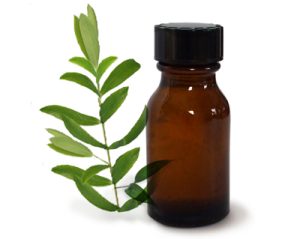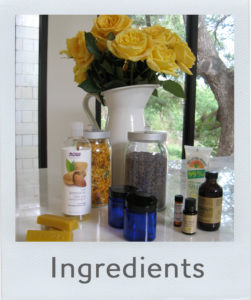 There are a million great natural ways to ward off mosquitos and other bugs as the temperature rises… Okay maybe not a million, but at least as many as there are kinds of bugs to fend off ourselves and our young ones. That said, if you’re anything like me, you’d rather someone give you a favorite recipe — and save your brain cells for harder questions like, “what was I in my past life?” (my eight year old), or “why is he not asleep at 11:30pm?” (me, regarding my five month old).
There are a million great natural ways to ward off mosquitos and other bugs as the temperature rises… Okay maybe not a million, but at least as many as there are kinds of bugs to fend off ourselves and our young ones. That said, if you’re anything like me, you’d rather someone give you a favorite recipe — and save your brain cells for harder questions like, “what was I in my past life?” (my eight year old), or “why is he not asleep at 11:30pm?” (me, regarding my five month old).
So, for Recipe Weekend, I’m sharing with you my new favorite recipe for natural, homemade bug repellent. I formulated this recipe based on what will work, but still be gentle enough to be used on both my little guys — and not stain anybody’s cute white summer tees. The geranium in this recipe is especially good for ticks, the citronella — and virtually everything else included — repel mosquitos and other bugs via smell, but still smell great to most human types.
Natural Bug Repellent: safe enough for Baby too
Here it is (for an 8oz batch):
- 4oz witch hazel
- 4oz almond oil
These are the carriers. Mix together, then add these essential oils:
- 15 drops geranium
- 15 drops citronella
- 7 drops eucalyptus
- 7 drops lavender
- 7 drops lemongrass
(optional: repel bugs, and make it smell extra yummy):
- 5 drops rosemary
- 5 drops peppermint
This recipe can be mixed and matched based on what you have available. The general formula for a good homemade bug repellent for babies and children is roughly a 1:10 ratio of essential oils to carrier liquid, or roughly 30-50 drops per 8oz of ‘carrier’. I love this formula because witch hazel is a great carrier for essential oils, is super-gentle for babies’ skin (its my favorite formula for diaper rash!) and you can buy it already infused with lavender. (It’s also great if heaven-forbid you get bitten.) The almond oil is high in vitamin E, so again, a skin-nourisher — and the rest, well, they’re the gold standard in essential oils that discourage bugs from hanging around.
These smells not your cup of tea? Experiment with formulas you like best. You can substitute out any of the above (I personally would keep the geranium, but anything else is up for grabs) and use any member of the mint family (catnip is particularly effective), cedarwood (very earthy, woodsy smell), lemon, even vanilla. You can also sub out the almond oil for purified water. I like the almond oil for its silky smoothness and absorbency, water provides a lighter spritz.
Apply liberally as you like, at least every 2-3 hours. On my baby, I tried just a little on his sensitive skin first, since everybody is different. Now we’re ready for my absolute favorite activity: staring up at the sky under our wide oak tree on our mowed-slightly-less than-we-ought-to lawn. Feel free to join us.
 I forget how quick French toast really is to make. It combines the protein of the eggs with the complex carbohydrates of the bread, which satisfies the protein – complex carbohydrate balance that feeds little one’s brain. Equally important, he loves it!
I forget how quick French toast really is to make. It combines the protein of the eggs with the complex carbohydrates of the bread, which satisfies the protein – complex carbohydrate balance that feeds little one’s brain. Equally important, he loves it!
 For stings, place a slice of papaya over the site for up to an hour. The papain enzyme in papaya is excellent at breaking down the venomous proteins causing inflammation and pain.
For stings, place a slice of papaya over the site for up to an hour. The papain enzyme in papaya is excellent at breaking down the venomous proteins causing inflammation and pain.
